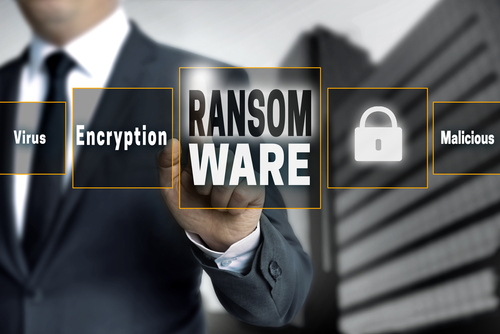Malwarebytes, the advanced malware prevention and remediation solution, released new findings today on the growing threat to companies from ransomware. The multi-country study surveyed 540 CIOs, CISOs and IT Directors from companies with an average of 5,400 employees across the US, Canada, UK and Germany and found that nearly 40% of businesses have experienced a ransomware attack in the last year. Of these victims, more than a third lost revenue and 20% had to stop business completely.
The report, entitled “State of Ransomware,” was sponsored by Malwarebytes and conducted by Osterman Research to explore ransomware attack frequency, how it works in an enterprise environment, ransom cost, infiltration points, impact, preparedness and more.
“Over the last four years, ransomware has evolved into one of the biggest cyber security threats in the wild, with instances of ransomware in exploit kits increasing 259% in the last five months alone,” said Nathan Scott, Senior Security Researcher at Malwarebytes and ransomware expert. “Until now, very few studies have examined the current prevalence and ramifications of actual ransomware incidents in the enterprise.”
Additional international findings include:
- Nature of attacks: 46% of all ransomware attacks originated from email
- Cost of attacks: Nearly 60% of all ransomware attacks in the enterprise demanded over $1,000. Over 20 percent of attacks asked for more than $10,000, 1% even asked for over $150,000
- Many are paying the ransom: Globally, more than 40% of victims paid the ransom demands
- Significant time spent on remediation: More than 60% of attacks took more than 9 hours to remediate
- Attacks frequent in certain industries: Healthcare and financial services were the leading industries attacked with ransomware globally, both of which were targeted well above the average ransomware penetration rate of 39%
- Potential loss of life: Amazingly, 3.5% even said lives were at stake because of ransomware’s debilitating effects
Severe downtime: 63% spent more than an entire business day trying to fix endpoints
- Switch from protection, to disaster planning: The most popular way of addressing the problem is not through protection, but by backing up data (over 71%).
In the United States alone, nearly 80% of companies have suffered a cyber attack in the last year and more than half experienced a ransomware incident. Eighty percent of attacks impacted mid-level managers or higher, while 96% of US organisations aren’t very confident in their ability to stop ransomware.
Key US findings include:
- Security attacks with ransomware are increasing: Nearly 80% of US companies have suffered a cyber attack in the last year and more than half experienced a ransomware incident. US organisations are the most attacked among the countries surveyed
- Ransomware attacks target healthcare and financial services: Healthcare and financial services were the leading industries attacked with ransomware globally, both targeted well above the average ransomware penetration rate of 39%
- Email is the top vector for spreading ransomware: More than half of the US attacks originated with email. Germany (61%) and the United States (59%) both see the highest level of ingress for ransomware through email, either through email attachments or malicious links in email messages. Email is much less common in the United Kingdom as an entry point for ransomware (39%) and in Canada (30%)
- Upper management and C-Level executives are at a higher risk: International survey results show that nearly 80% of attacks impacted mid-level managers or higher, with 25% of incidents attacking senior executives and the C-Suite. 68.4% of US respondents noted ransomware attacks impacted mid level managers or higher
- Cybercriminals held high value data for ransom: Nearly 80% of the US organisations breached had high-value data held for ransom
- Attacks are impacting more than initial endpoints: More than 40% of ransomware attacks in all four countries were successful in impacting more than a single endpoint, with nearly 10 percent of the attacks affecting more than one-quarter of the endpoints in the business
- Security organisations are not confident in their defences: Decision makers in US organisations have a relatively low level of confidence in their ability to effectively stop ransomware and are less confident about ransomware prevention than their counterparts in Canada, Germany and the United Kingdom. 96% of US organisations aren’t very confident in their ability to stop ransomware
- Current enterprise security measures are weak against ransomware: Almost half of ransomware incidents in the US occurred on a corporate desktop within the enterprise security environment
- Ransomware remediation takes hours: 44% of attacks on US companies forced IT staff to work more than nine hours to remediate the incident. Globally, the figure is 63% of incidents that took more than nine hours to remediate.
To address this issue head on, Malwarebytes also announced today, new anti-ransomware additions to Malwarebytes Endpoint Security, an innovative platform that delivers powerful multi-layered defence for smart endpoint protection against malware, and ransomware. Endpoint Security platform customers will have access to signature-less behavioural monitoring technology that automatically detects and blocks both known and unknown ransomware, greatly reducing vulnerability to these attacks.
“The results from this survey further emphasise that any business in any region is incredibly vulnerable to ransomware,” said Marcin Kleczynski, CEO of Malwarebytes. “Cyber criminals are increasing their use of ransomware in their attack strategies globally, causing business disruption, loss of files and wasted IT man-hours. In order to stay safe, businesses must invest heavily in both employee education and technology. We are thrilled to be able to give companies a solution that can thoroughly protect them against known and now unknown ransomware threats.”



